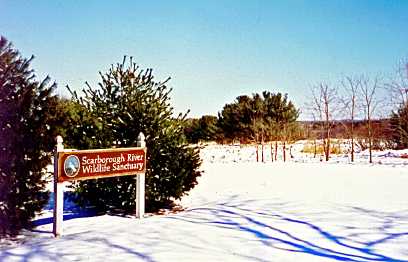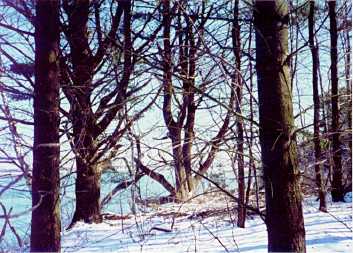A citizens'
initiative in the early 70's convinced the State of Maine to
acquire the land for preservation. Citizen interest in
protection of the parcel has been strong for almost three
decades.
This property has been
preserved for wildlife habitat for over 25 years under
protection of the State. The land was purchased by the State of
Maine with federal land conservation funds in 1971 and was
purchased for preservation.
The property was previously
managed by the Department of Inland Fisheries and Wildlife as a
feeding area for waterfowl.
On March 30, 1989, the State
conveyed the land to the Town of Scarborough with the
restriction that it be used for recreational purposes. The Town
Council convened a committee, known as the Scarborough River
Committee, to determine the best use for the parcel and propose
a master plan. This Committee worked for two years studying the
parcel and designing the Sanctuary and proposed its adoption to
the town.
Controversy erupted during
the next two years concerning the Sanctuary. The Town had not
officially adopted the Sanctuary plan proposed by the
Scarborough River Committee and a group of citizens initiated a
petition for more intensive use of the land. The original
citizens group that formed 25 years before joined with members
of the Scarborough River Committee to fight for preservation.
In 1996 a plan known as the Scarborough River Park was adopted
by the Town Council but later rescinded. Then, in 1998, the
Town Council authorized the Recreation Advisory Committee to
study the land again. A proposal to officially establish the
Sanctuary was forwarded to the Town Council in October of 1998
and was ultimately enacted as an ordinance in January of 2000.
It is now an official wildlife sanctuary with protection of
local law.


 The
Scarborough River Wildlife Sanctuary is 56 acres of
beautiful land located off the Pine Point Road in West
Scarborough, Maine. The parcel is home to abundant
wildlife and is one of the largest open spaces in the
community. The upland consists of fields, an emerging
forest and a great many rare and beautiful plants can be
found there.
The
Scarborough River Wildlife Sanctuary is 56 acres of
beautiful land located off the Pine Point Road in West
Scarborough, Maine. The parcel is home to abundant
wildlife and is one of the largest open spaces in the
community. The upland consists of fields, an emerging
forest and a great many rare and beautiful plants can be
found there.


 On Wildlife
and Habitat
On Wildlife
and Habitat